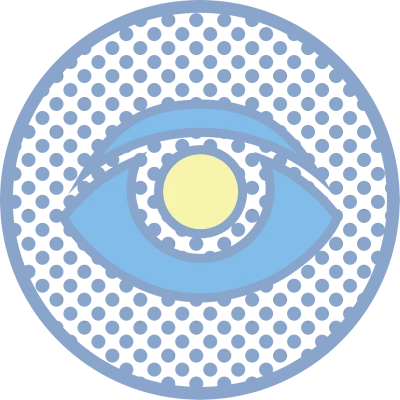What is a Macular hole?
A macular hole is a small break or defect in the macula, the central part of the retina responsible for sharp, detailed vision. The macula is crucial for performing daily tasks such as reading, driving, recognizing faces, and distinguishing fine details. When a hole forms in this region, it disrupts central vision, causing blurring, distortion, and, in advanced cases, a significant reduction in sight. Macular holes are different from macular degeneration, another condition affecting central vision, though both can lead to severe vision impairment if untreated.
The condition primarily affects older adults, typically over the age of 60, and is often associated with changes in the vitreous, the gel-like substance inside the eye. As people age, the vitreous shrinks and pulls away from the retina, sometimes creating tension on the macula and leading to the development of a hole. Understanding the different macular hole stages is critical in determining treatment options and preventing permanent vision loss.
Macular Hole Symptoms
-
Blurred or Distorted Vision – Straight lines may appear wavy or bent.
-
Central Vision Loss – dark or blind spot in the center of vision.
-
Difficulty Reading or Recognizing Faces – Fine details become hard to see.
-
Increased Light Sensitivity – Bright lights may cause discomfort.
-
Reduced Sharpness and Clarity – Vision appears hazy or unclear.
-
Objects Appear Smaller or Further Away – A phenomenon called micropsia

Causes of Macular Hole
A macular hole is a small break or defect in the macula, the central part of the retina responsible for sharp, detailed vision. It can cause blurry or distorted central vision. Several factors can contribute to its development:
Primary Causes:
- Aging (Vitreo-Macular Traction) – The most common cause. As we age, the vitreous gel inside the eye shrinks and pulls away from the retina. If it adheres to the macula too strongly, it can create a hole.
- High Myopia (Severe Nearsightedness) – People with high myopia have thinner retinas, making them more susceptible to macular holes.
- Trauma or Injury – Direct trauma to the eye, such as a blow or accident, can cause a macular hole.
- Retinal Detachment or Epiretinal Membrane – Conditions that cause traction or pulling on the retina may lead to a macular hole.
- Diabetic Eye Disease – Severe diabetic retinopathy can weaken the macula, increasing the risk of holes forming.
- Macular Edema (Swelling of the Macula) – Fluid buildup can weaken the macular tissue, leading to hole formation.
Less Common Causes:
- Inflammatory Diseases (such as uveitis)
- Macular Telangiectasia (a rare retinal disorder)
- Previous Eye Surgery (like cataract or retinal surgery, which can sometimes lead to macular holes)
Who is at Risk of Developing a Macular Hole?
Certain factors can increase the likelihood of developing a macular hole, including:
- Aging: The primary risk factor, as macular holes predominantly affect individuals over 60.
- Gender: Women are at a slightly higher risk than men, though the reason is not entirely understood.
- High Myopia (Severe Nearsightedness): People with extreme myopia experience thinning of the retina, increasing the risk of developing a macular hole.
- Eye Trauma: Injuries from blunt force, sports, accidents, or any direct impact to the eye can lead to retinal damage and macular hole formation.
- Diabetic Retinopathy: Long-standing diabetes can lead to structural retinal changes that may predispose individuals to macular holes.
- Previous Retinal Detachment Surgery: Individuals who have undergone procedures to treat retinal detachment may be at higher risk.
- Vitreous Shrinkage or Detachment: As the eye ages, the vitreous contracts and pulls away from the retina. If the adhesion is too strong, it can create a hole.
- Genetics and Family History: Though less common, a hereditary component may exist, increasing susceptibility to macular holes.
Types of Macular Holes
Macular holes can be classified based on their characteristics, severity, and causes:
-
Full-Thickness Macular Hole (FTMH)
A full-thickness macular hole extends through all retinal layers, causing significant central vision loss. These cases typically require surgical intervention to restore vision.
-
Lamellar Macular Hole
A partial-thickness defect that does not involve a complete hole in the retina. It may cause mild visual distortion but does not always necessitate surgery.
-
Myopic Macular Hole
People with severe myopia experience increased eye elongation, which can lead to thinning of the retina and, subsequently, macular holes.
-
Traumatic Macular Hole
Macular holes that occur due to direct injury or trauma to the eye. These may heal on their own in some cases, but surgery is often needed for significant vision restoration.
Different Stages of Macular Holes
Macular holes develop in four stages, each affecting vision differently. Early detection and intervention can improve outcomes significantly.
Stage 1 – Foveal Detachment
- The earliest stage, where a small foveal cyst forms.
- Mild distortion or blurring of central vision may be noticed.
- Some cases may heal spontaneously, while others progress to the next stage.
Stage 2 – Partial-Thickness Hole
- A small full-thickness hole begins to develop.
- Visual impairment becomes more noticeable, particularly when reading or focusing on fine details.
- If left untreated, about 70% of cases progress to Stage 3.
Stage 3 – Full-Thickness Hole
- The hole extends through all layers of the macula.
- Central vision loss is significant, with pronounced distortion and blurring.
- Surgery is usually required to restore some visual function.
Stage 4 – Complete Vitreous Separation
- The vitreous gel fully detaches from the macula, causing complete disruption.
- Vision impairment is severe, necessitating immediate surgical intervention.
Diagnosis of Macular Hole
To diagnose a macular hole, an ophthalmologist may conduct the following tests:
-
Optical Coherence Tomography (OCT): Uses light waves to capture detailed images of the retina, identifying the presence and severity of the hole.
-
Dilated Eye Examination: Helps visualize the macula and detect any structural abnormalities.
-
Amsler Grid Test: Assesses visual distortion, allowing patients to self-monitor macular changes.
- Fluorescein Angiography: A dye test used to evaluate blood flow and identify any underlying retinal issues contributing to the macular hole.
Treatment and Management Options for Macular Hole
-
Vitrectomy Surgery
The most effective treatment for macular holes, where the vitreous gel is removed and replaced with a gas bubble to facilitate healing.
-
Best Eye Drops for Macular Hole
While no eye drops can cure macular holes, some may help reduce inflammation and aid in post-surgical healing.
-
Lamellar Macular Hole Treatment
Observation, specialized contact lenses, or eventual surgical intervention may be required based on symptom severity.
Precautions After C3R Surgery for Macular Hole
Following vitrectomy or C3R (Collagen Cross-Linking with Riboflavin) surgery, patients should follow these precautions:
-
Maintain a Face-Down Position: Ensures the gas bubble stays in place, aiding macular healing.
-
Avoid Air Travel and High Altitudes: Changes in air pressure can cause the gas bubble to expand, leading to complications.
-
Use Prescribed Eye Drops: Reduces the risk of inflammation and infection post-surgery.
-
Limit Screen Time and Strain on Eyes: Avoiding excessive screen use helps reduce discomfort and improves healing.
-
Attend Regular Follow-Ups: Monitoring progress ensures early detection of any complications.
Frequently Asked Questions (FAQs) about Macular Hole
Can a macular hole be prevented?
While macular holes cannot always be prevented, reducing risk factors like managing diabetes, avoiding eye trauma, and getting regular eye check-ups can help detect early changes in the macula. If you have a high risk, an ophthalmologist can monitor your condition closely.
Can eye drops repair a macular hole?
No, eye drops cannot repair a macular hole. Treatment typically requires a vitrectomy surgery, where the vitreous gel is removed, and a gas bubble is inserted to help the macula heal. Early-stage holes may sometimes close on their own, but eye drops do not directly aid in this process
What is the best eye drop for a macular hole?
There is no specific eye drop that can heal a macular hole, but lubricating drops may help reduce discomfort and dryness. If associated with macular edema, doctors may prescribe anti-inflammatory or steroid drops to manage swelling. Always consult an eye specialist for the right treatment approach.
What are some things to remember after Macular hole surgery?
When it comes to macular hole surgery, ensure you visit a reputed hospital to seek the best eye care with the help of expert ophthalmologists and surgeons. Post your surgery, you will be advised to follow some post-operative care instructions like maintaining a head-down position for six to eight hours for over a week.
The patient has the flexibility to choose whether they want to lie down or sit in one position with the help of a headrest. This post-surgery measure is essential as it gives a proper gas sealing effect on the macular hole.
What happens in a Macular hole surgery?
Macular hole surgery is performed under the effect of anaesthesia so that the patient is in their senses but does not feel the procedure. The process of macular hole surgery can be divided into two parts. In the first part, a gel-like fluid called vitreous is removed from the eye.
The surgeon makes an opening in the eye to skillfully insert medical instruments used to remove the fluid. In addition, they also begin the process of removing small tissues or membranes near the macular hole by using forceps. This step prevents the macular hole from closing, ensuring that the surgery is carried out smoothly.
In the last stage of macular hole treatment, a sterile gas is exchanged with the fluid present in the eye to keep a specific amount of pressure on the macular hole until it is properly healed.
What can I expect after Macular hole surgery?
Your vision will be blurry when the bubble is at its full size and as it begins to dissipate. However, over a couple of weeks after the surgery, your vision will automatically start improving, which might give you slight discomfort with a scratchy feeling. In this case, it is best to get in touch with your doctor, who will suggest you the right pain-reducing techniques and medicines.
Usually, the prescribed medicines are Tylenol or similar pain relievers, but you must report to your doctor if they also turn ineffective. In addition, mild or even extreme redness is common as it will gradually reduce over time.
As a preventive measure, try to avoid high altitudes or elevations as they can force the bubble to expand beyond a standard size. Since this can lead to eye damage, it is better to avoid flying until the bubble is fully resorbed.
What are lamellar Macular holes?
The cavity of the eyes is filled with a gel called the vitreous humour. Now, as we age, this gel naturally gets pulled from the retina, displacing a tissue in the eye and forming a lamellar hole. In most cases, lamellar holes can only be diagnosed or detected through a thorough retinal scan.
In several instances, lamellar holes are interconnected with other medical conditions like Vitreomacular traction, Epi-retina membrane, Cystoid macular oedema, and more. Your ophthalmologist will test your eyes for all the above-mentioned conditions to ensure you receive the right treatment at the right time.

Do not ignore eye trouble!
Now you can reach our senior doctors by booking an online video consultation or a hospital appointment
Book an appointment now